Circe: Powerful Divine Sorceress Who Mastered Healing, Miracles And Transforming People Into Animals In Greek Mythology
A. Sutherland - AncientPages.com - One of many impressive and colorful figures in Greek mythology is Circe, a divine witch and goddess of incredible power. She had the ability to predict the future and transform people into animals. Circe was also a shape-shifter and performed cleansing rituals.
Left: Circe and Scylla in John William Waterhouse's Circe Invidiosa (1892) - Credit: Public Domain - Right: Circe on a 490–480 BC oil jar, Athens-National Archaeological Museum. Credit: Marsyas - CC BY-SA 2.5
She could turn people into animals, change the weather, had knowledge about healing herbs, and was skilled in spinning.
Although Circe performed many miracles, she was not immortal.
Daughter of Helios and Perse, an Oceanid, Circe was one of many divine magicians in her family, including Ariadne, Pasiphae, Angitia, Medea, and Hekate.
The daughter of the sun god Helios and a descendent of the sun, Circe's eyes shone with brilliant light, according to Homer's description. Also, Apollonius of Rhodes writes that she (just like every other descendant of Helios) had flashing golden eyes that shot out rays of light,
Homer wrote that Circe's dwelling was on the Isle of Aiaia (Aeaea) - the "Island of Dawn." She lived in a stunning marble palace in a forest clearing. Homer described her as "the fair-haired goddess," forever young and beautiful, who spent her days singing and weaving. The same habits are also associated with goddesses of fate and destiny in Roman and Slavic myths.
Unfortunately, despite her beautiful appearance, Circe - the owner of a magic wand – cannot be trusted and treated as an ordinary woman because she is a great sorceress. She could appear in any form and had positive and negative power over people.
Circe transforming men into pigs. Credit: Adobe Stock - Archivist
Her island of Aeaea was populated by beautiful handmaidens and tamed animals, including wolves and lions, which were humans under her spell.
Circe liked transforming male visitors into lions, baboons, and other animals, but mainly into pigs, her sacred animals.
Many famous appearances of Circe can be found in Greek mythology. In Homer's Odyssey, we also meet Circe, whose transformations are never accidental, and through them, she reveals the true animal identity within each man.
When Odysseus and his crew, trying to return home from the Trojan War, come to the island of Circe, they discover that the place's inhabitants are charming handmaidens and strange animals.
For the moment, all of them are under Circe's spell.
However, Odysseus alone is saved from this fate because Hermes, the messenger god sent by the goddess Athena, meets him. He reveals an herbal antidote to Circe's magic, a mysterious " moly " plant that can help defeat Circe and free his crew from their enchantment.
According to Homer's description of the plant, its root "was black, while the flower was as white as milk; the gods call it Moly, Dangerous for a mortal man to pluck from the soil, but not for the deathless gods. All lies within their power..."
It meant that when Circe touched Odysseus with her divine wand, he did not succumb to her power. Also, following Hermes's advice earlier, Odysseus threatened the sorceress with a sword that could kill her. It was enough for her, and she finally agreed to restore his companions to human form. She also hosted them for a month (or, in other versions, for a whole year). At the same time, Hermes advises Odysseus not to reject Circe's advances, so Odysseus decides to share a bed with her. He stays with her on the island for years, fathering their son, Telegonus.
As his primary trainer, Circe guides Odysseus into the secrets of shamanism, teaching him how to travel to Hades to interview dead souls and then return.
Thanks to the ability to foresee the future, the great sorceress offers Odysseus travel advice of great importance. Without her help, it's doubtful that Odysseus would ever have reached home in Ithaca.
Undoubtedly, Circe was often considered an attractive and seductive but ultimately dangerous woman. Still, we must remember that in Homer's original text, she is a helpful mythological figure.
Strabo writes that a tomb-shrine of Circe was attended in one of the Pharmacussae islands, located off the coast of Attica, a place associated with ancient hero worship. Circe was also worshiped in Mount Circeo, in the Italian peninsula, which took its name after her according to ancient legend.
Strabo also says that Circe had a shrine in the small town and that the people there kept a bowl they believed once belonged to Odysseus.
Her sacred plants included enchanter's nightshade, mandrakes, and junipers.
Written by – A. Sutherland - AncientPages.com Senior Staff Writer
Updated on January 5, 2024
Copyright © AncientPages.com All rights reserved. This material may not be published, broadcast, rewritten or redistributed in whole or part without thexpress written permission of AncientPages.com
More From Ancient Pages
-
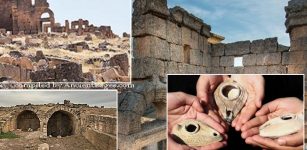 1,500-Year-Old Ancient Lamps Unearthed In Zerzevan Castle In Southeast Turkey
Archaeology | Nov 25, 2019
1,500-Year-Old Ancient Lamps Unearthed In Zerzevan Castle In Southeast Turkey
Archaeology | Nov 25, 2019 -
 Mysterious Ancient Mayan ‘Copernicus’ And The Venus Table Of The Dresden Codex: The Hieroglyphs Have Been Misunderstood – Researcher Says
Archaeology | Aug 23, 2016
Mysterious Ancient Mayan ‘Copernicus’ And The Venus Table Of The Dresden Codex: The Hieroglyphs Have Been Misunderstood – Researcher Says
Archaeology | Aug 23, 2016 -
 First Peoples Of Japan: Ainu Civilization And Its Unknown Origin
Ancient Mysteries | Oct 18, 2014
First Peoples Of Japan: Ainu Civilization And Its Unknown Origin
Ancient Mysteries | Oct 18, 2014 -
 Unexplained Encounters With Unknown Beings In California – Old And Modern Reports
Featured Stories | Mar 11, 2024
Unexplained Encounters With Unknown Beings In California – Old And Modern Reports
Featured Stories | Mar 11, 2024 -
 Scientists Suggest Neanderthals And Modern Humans Should Be Classified As Separate Species
Evolution | Dec 6, 2024
Scientists Suggest Neanderthals And Modern Humans Should Be Classified As Separate Species
Evolution | Dec 6, 2024 -
 Nimerigar: Mythological Race Of Little People Living In Wyoming
Featured Stories | Jun 7, 2017
Nimerigar: Mythological Race Of Little People Living In Wyoming
Featured Stories | Jun 7, 2017 -
 Mysterious Jomsvikings: Fearless Scandinavian Warrior-Brotherhood
Featured Stories | Apr 26, 2016
Mysterious Jomsvikings: Fearless Scandinavian Warrior-Brotherhood
Featured Stories | Apr 26, 2016 -
 2,000 Year-Old Books Written By Bian Que The Divine Healer Unearthed
Artifacts | May 13, 2014
2,000 Year-Old Books Written By Bian Que The Divine Healer Unearthed
Artifacts | May 13, 2014 -
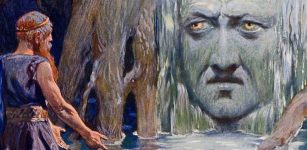 Giant Mimir And The Well Of Wisdom In Norse Beliefs
Featured Stories | Apr 11, 2018
Giant Mimir And The Well Of Wisdom In Norse Beliefs
Featured Stories | Apr 11, 2018 -
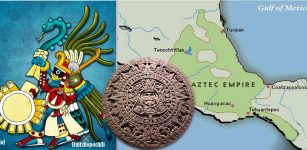 Why The Aztecs Called Themselves ‘Mexica’
Ancient History Facts | Jan 13, 2018
Why The Aztecs Called Themselves ‘Mexica’
Ancient History Facts | Jan 13, 2018 -
 Socrates: Great Philosopher And Brave Man Who Still Inspires Many People
Featured Stories | Jul 21, 2016
Socrates: Great Philosopher And Brave Man Who Still Inspires Many People
Featured Stories | Jul 21, 2016 -
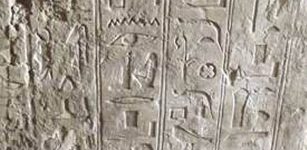 Tomb of the 26th dynasty vizier of Upper Egypt discovered in South Assassif, Luxor
Civilizations | Aug 31, 2015
Tomb of the 26th dynasty vizier of Upper Egypt discovered in South Assassif, Luxor
Civilizations | Aug 31, 2015 -
 Are Relics In Santi Apostoli Church Really The Remains Of St. James And St. Philip?
Fossils | Feb 8, 2021
Are Relics In Santi Apostoli Church Really The Remains Of St. James And St. Philip?
Fossils | Feb 8, 2021 -
 Trajan’s Column – A Roman Triumphal Column In Ancient Rome
Ancient History Facts | Aug 31, 2021
Trajan’s Column – A Roman Triumphal Column In Ancient Rome
Ancient History Facts | Aug 31, 2021 -
 Two Scribes Penned 8th Century ‘Samaria Ostraca’ Inscriptions Unearthed In Samaria
Archaeology | Jan 23, 2020
Two Scribes Penned 8th Century ‘Samaria Ostraca’ Inscriptions Unearthed In Samaria
Archaeology | Jan 23, 2020 -
 Stonehenge Is Older Than Mankind – Archaeologist Suggests
Archaeology | Apr 12, 2018
Stonehenge Is Older Than Mankind – Archaeologist Suggests
Archaeology | Apr 12, 2018 -
 The Eagle And The Condor Prophecy: A 2,000-Year-Old Message For The Future
Featured Stories | Apr 21, 2017
The Eagle And The Condor Prophecy: A 2,000-Year-Old Message For The Future
Featured Stories | Apr 21, 2017 -
 Quest For Legendary Ophir – The Biblical El Dorado
Biblical Mysteries | Dec 16, 2016
Quest For Legendary Ophir – The Biblical El Dorado
Biblical Mysteries | Dec 16, 2016 -
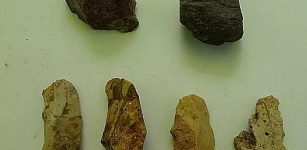 İnkaya Cave Study Brings To Light 86,000-Year-Old Traces Of Human Life
Archaeology | Aug 22, 2023
İnkaya Cave Study Brings To Light 86,000-Year-Old Traces Of Human Life
Archaeology | Aug 22, 2023 -
 ‘Sophisticated’ 4,000-Year-Old Steppe Pyramid Discovered In Kazakhstan
Archaeology | Aug 12, 2023
‘Sophisticated’ 4,000-Year-Old Steppe Pyramid Discovered In Kazakhstan
Archaeology | Aug 12, 2023


